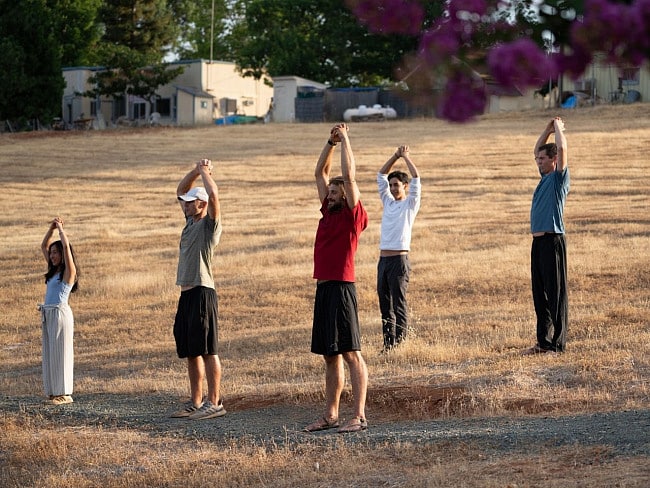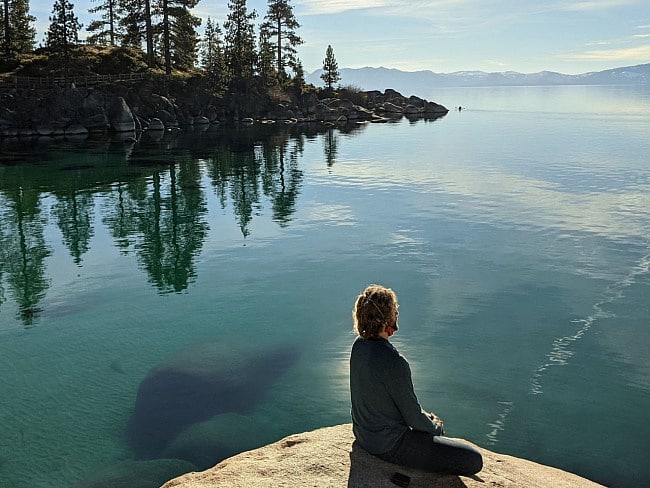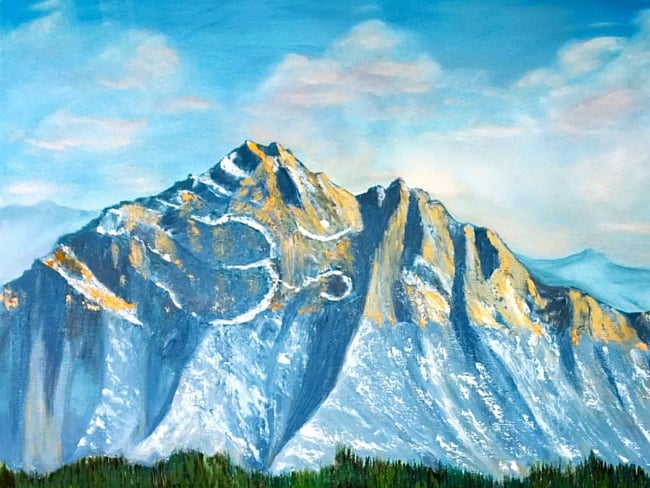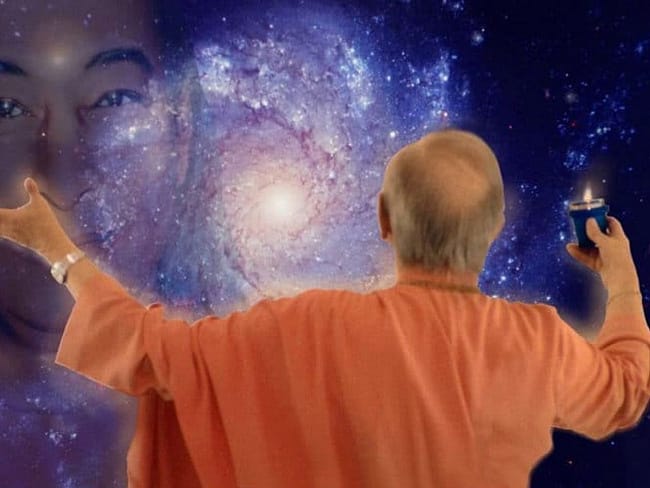How to Meditate
"By the practice of meditation, you will find that you are carrying within your heart a portable paradise."
Paramhansa Yogananda
What Is Meditation?
Technique
Process
State
Practice
State
Process
Practice
Technique
Why Meditate?
Daily meditation raises the quality of your life by helping you relax and calm the body, mind and heart and attune yourself to a higher reality. In deep stillness, you establish an expanded sense of connection with yourself and with life all around you.
By becoming stronger and more complete in yourself through meditation, you will discover that your happiness does not depend on outer conditions such as people, things, or circumstances, but rather on how you inwardly choose to respond to life.
Thus, there is no aspect of your life that cannot be improved by meditation, whether it be in work, relationships, health, or developing any personal quality, such as willpower.
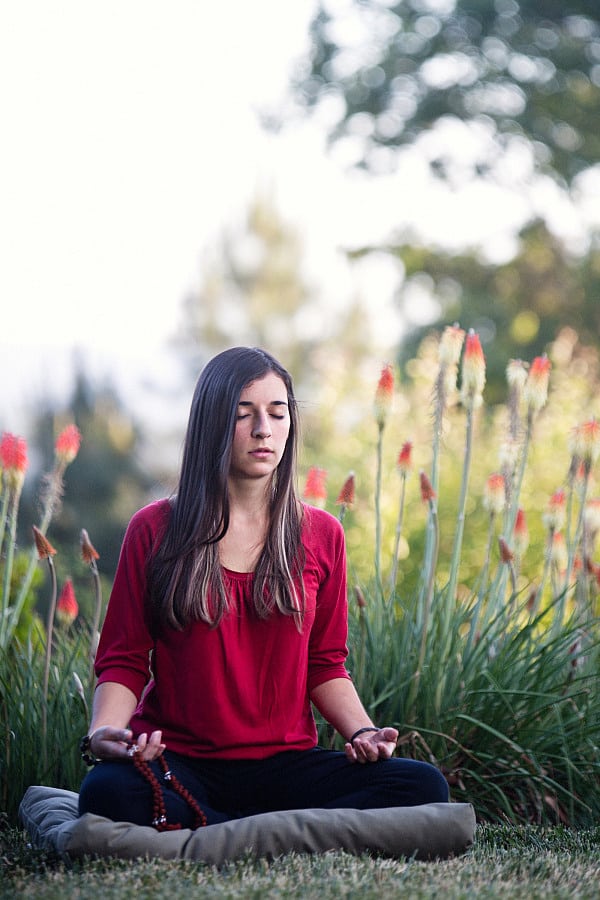
How to Meditate?
Learn how to meditate properly with this simple three-step process:
- Relax completely, both physically and mentally
- Interiorize your mind and concentrate one-pointedly, usually at the point between the eyebrows.
- Focus your concentrated mind on an aspect of your deeper self or of God, such as love, joy, or light. This will help to naturally expand your consciousness.
Although you can certainly teach yourself meditation with the video, this how to meditate step-by-step process is not so easy to put into practice! The restless mind can be difficult to tame. It is very helpful for any meditator, whether a beginner or an experienced practitioner, to seek out guidance and support from skillful meditators. Ananda, as a worldwide community of daily meditators, is here to support your meditation journey.
Benefits of Meditation
Meditation is simply the science for being a better and healthier version of yourself. When you meditate you are actively stimulating the neurons in the prefrontal lobe, the most advanced and evolved part of the brain.
At the same time, you are decreasing activity in the limbic system, the most primitive portion of the brain responsible for the fight or flight response. With meditation you rewire the neural pathways in your brain to access higher consciousness.
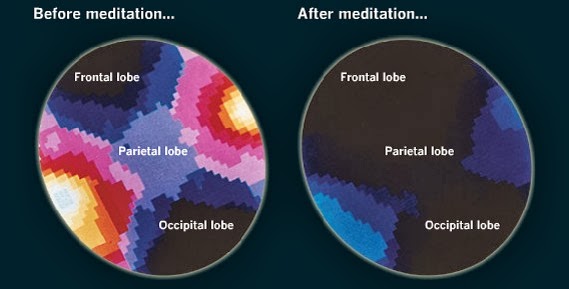
Physical
- Release tension
- Increase circulation and detoxification of the blood
- Strengthen the immune system
- Lower blood pressure
- Reduce chronic pain
- Slow aging
Mental/Emotional
- Decrease stress and anxiety
- Improve concentration and memory
- Promote inner strength, emotional balance and resilience
- Increase creativity and problem-solving skills
- Help you overcome fears and insecurities
- Cultivate positive thinking and attitudes, such as willpower, cheerfulness, and generosity
Spiritual
- Enhance intuition
- Improve connection and harmony with inner self and the Divine
- Increase compassion and empathy
- Feel inner peace, expansive joy and unconditional love
- Discover your higher Self
- Progress toward enlightenment
Why Learn to Meditate with Ananda?
Paramhansa Yogananda
Learn MoreSwami Kriyananda
Learn MoreTaught to our founder, Swami Kriyananda, by his guru, Paramhansa Yogananda, our meditation techniques are focused on the breath and don’t require any belief system to practice.
Ananda’s meditation techniques are simple to learn, but powerfully transformative. The most basic technique can be learned in a few minutes, while the most advanced one, Kriya Yoga, requires about a year of preparation.
Our Ananda meditation teachers have been sharing meditation around the world for more than 50 years, giving classes, workshops, retreats, and writing books.
Our 10-week online Ananda meditation class Ananda Course in Meditation has helped thousands of people learn how to meditate properly and maximize meditation as a tool for outer and inner success.
What Are Ananda's Meditation Techniques?
The meditation techniques that Ananda teach are part of the Path of Kriya Yoga as taught by Paramhansa Yogananda.
The Path of Kriya Yoga is a comprehensive spiritual path to Self-realization that offers scientific methods of energy control to help the spiritual seeker take charge of their own life and happiness and achieve union with God.
Yogananda’s set of exercises for recharging the body battery and mastering your life force for radiant health, mental vitality, success and Self-realization.
An ancient meditation mantra technique to help you still the mind, calm the heart and tap into the inner peace and joy within.
A tremendously powerful meditation technique that helps you commune with the cosmic vibration AUM as an expression of God in the form of sound.
The most effective and best meditation technique for accelerating spiritual growth, transcending karma and realizing God. Yogananda described Kriya Yoga as “the jet airplane route to God.”
Solutions to Common Meditation Challenges
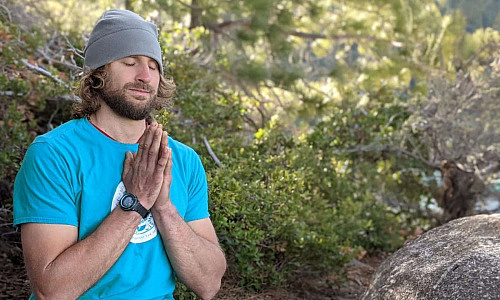
Most people experience similar obstacles as they first learn how to meditate and even when they’ve meditated for years. Here are some solutions to popular meditation challenges:
One of the most important aspects of a sitting meditation is to be able to sit comfortably, without an aching back, or legs hurting or going to sleep. If you are in pain or great discomfort, the only thing you will be meditating on is that! Options for sitting are in a chair, or on a meditation bench, or on a pillow on the floor. Most westerners are not trained from birth to sit comfortably on a hard floor. So a chair is probably best for most of us, beginners or otherwise-and many very great meditators with many years experience use a chair or stool for their meditations. It is not a sign of lack of meditative ability if you are unable to sit in the lotus posture or any other floor sitting position.
Click here to learn more about how to sit comfortably for meditation.
The best way to relax the body is to tense it first, and thereby to equalize the flow of tension all over the body. Then, with relaxation, you will find tensions being released that you didn’t even know existed.
Inhale, tense the whole body, then throw the breath out and relax. Doing this three to six times will help rid the body of unconscious tensions. Now, consciously relax the various body parts, starting with your feet and working your way gradually to the head and brain. It may help you to visualize space or light filling each area as you relax it. Physical relaxation is the first step necessary for deep meditation.
Regular Breathing to Relax the Mind
The breath is intimately linked with the mind. By controlling and relaxing the breath, we influence the mind to become calm. Inhale slowly counting one to twelve, hold your breath for the same number of counts, then exhale for the same count. This is one round of “regular breathing.” Do six to nine rounds. You may either lengthen or shorten the number of counts according to what is comfortable, but keep the inhalation, retention and exhalation equal.
Releasing Emotional Tension
This practice can also help us to achieve release from mental and emotional pain. The stress that accompanies such pain usually produces physical tension. By relaxing the body, as outlined above, then extending the thought of physical relaxation to the release of tension in the mind and in the emotions, we can achieve mental and emotional tranquility with the release of tension in the body.
Whenever you feel anxious or fearful about anything, or distressed over the way someone has treated you, or upset for any reason, inhale and tense the body. Bring your emotions to a focus in the body with that act of tension. Hold the tension briefly, vibrating your emotions along with the body. Throw the breath out, and, keeping the breath exhaled as long as you can do so comfortably, enjoy the feeling of inner peace. Remain for a time without thought.
When the breath returns, or when thoughts once again bestir themselves in your mind, fill your brain with some happy memory that will provide an antidote to your emotions. Concentrate for several minutes on the happiness of that memory.
Throughout this process, look upward, and mentally offer yourself, like a kite, into the winds of inner freedom. Let them sweep you into the skies of superconsciousness.
Paramhansa Yogananda made this suggestion for overcoming drowsiness during meditation: “Squeeze your eyes shut several times, then open them wide and stare straight ahead. Repeat this practice once or twice more. If you do this, sleepiness will cease to bother you.”
Keeping the eyes uplifted during meditation helps you stay more alert. It also attunes you to higher states of consciousness. If you find yourself drifting off or feeling sleepy while meditating, concentrate very deeply — but without strain — at the point between the eyebrows.
If meditation sleepiness still is a problem, you might find it helpful to shorten your meditations and focus on making them as dynamic as possible. Then gradually lengthen your meditations. Try also to meditate during those times of day when you’re the most alert and energetic.
You may experience times where feeling sleepy during meditation is a recurring problem. If this is the case, don’t worry about it; it’s usually just a phase. Meditating with energy and calm intensity — plus a positive attitude — is the key to breaking through.
When you’re short on time, cut down on the length of meditation, rather than skipping it altogether. Go for quality rather than quantity. Learn to manage your time a little more wisely. Remember that if you meditate your energy and concentration powers grow, and you will use all your time more efficiently.
It also helps to be creative in finding times and places to meditate. A father of three young boys told how it’s impossible for him to meditate once he gets home from work, because his sons are so excited to see him. His solution was to park his car a block from his house, and meditate there.
We do what we want to do. If you are having difficulty finding time to meditate, it may not yet be a high enough priority for you. Remind yourself why meditation is so essential by recalling the times when it has transformed your life. Even a few minutes a day can have a tremendous impact. A married couple once said that before they started meditating, their evenings were somewhat negative because they were in the habit of coming home from work and complaining about their day. Now, with meditation their evenings were radically different. Even their 5-minute pre-dinner meditations are enough to dramatically shift their energy out of problem-consciousness, to a more positive and loving approach to life. They said their evenings were now a joy.
Yogananda said that the more we meditate, the more we’ll want to meditate. Often we just have to get ourselves started, and in a flow. If it is late at night, and your regular meditation routine seems like too much to do, select something from your practice you want to do, and say to yourself, “I’ll just do this.” Then do it! You’ll often find, however, that once you begin, you’ll want to do more.
Our quality of life depends on the quality of our awareness, because our outer lives are a reflection of our consciousness. The more we realize this, the more we will make time for meditation.
Thinking you are not good at meditation is a very insidious thought, because it may cause you to stop meditating completely. Plus, it isn’t true! You cannot measure your success as a meditator by judging a particular meditation, or even a series of meditations. Every meditation builds on the one before it, even if you think it wasn’t a good one. What is a good meditation anyway? One that you do! St. Teresa of Avila said, “A meditation is well done, if all you did was fight distraction.”
The purpose of meditation techniques is to bring the mind back from being distracted. We think we should never be distracted once we have a meditation technique. But remember that the point of using meditation practices is that now we do have something for the mind to return to. This is practicing meditation correctly-each time you realize that you are distracted, calmly return to your technique. No matter how many times this happens during a meditation, calmly return and never give in to discouragement.
Knowing how important concentration is, people sometimes become discouraged over their inability to hold their minds steady in meditation. We need to realize, however, that completely quieting the mind is the goal of meditation, and not something we will necessarily experience right away. No one expects to master the guitar the first time he plays, and this is true for meditation, whose very mastery reveals Infinity to us.
An important rule in life is: Don’t be impatient. This rule is doubly important for meditation, for whereas the general stricture against impatience gives hope of finding inner peace in meditation, that hope is demolished if one applies to meditation itself attitudes that we’ve developed in the “rat race.” To find God, it is better to be a long-distance runner than a sprinter. Today’s meditative efforts will have to be renewed tomorrow, and again the day after tomorrow, and the day after that, and so on for as long as it takes to achieve the consciousness of the Eternal Now.
Don’t let your approach to meditation be so achievement-oriented that you end up mentally tense. Yogananda, noting Swami Kriyananda’s own tendency toward impatience, once said to him, “The principle of Karma Yoga applies to meditative action also. Meditate to please God. Don’t meditate with desire for the fruits of your meditations. It is best in the beginning to emphasize relaxation.”
The more you seek rest as the consequence of doing, rather than in the process of doing, the more restless you will become. Peace isn’t waiting for you over the next hill. Nor is it something you construct, like a building. It must be a part of the creative process itself.
Learn to be restful, even in the midst of activity, and you will be able to relax better when you sit to meditate. As Paramhansa Yogananda put it, “Be calmly active, and actively calm.”
If you feel tension when you look at the spiritual eye, try this advice from Swami Kriyananda:
Raise your gaze upward-not crossing the eyes, but focusing them on a point somewhat beyond the forehead at about the distance of your thumb when you hold your arm extended above you. (The height of your thumb should be level with the top of your head.)
The important thing is that your attention, not your eyes, be focused on that point in the forehead. Don’t try forcibly to bring your eyes to a focus, but gaze mentally at that point, and let the spiritual eye draw you into itself.
Another technique for staying relaxed as you focus at the spiritual eye, is to think of your eyes as being situated only in the upper part of their sockets. You might also try lowering your gaze until the strain disappears, and then mentally look through and beyond the spiritual eye. A technique to help you do this is to feel as though you are gazing at the spiritual eye from the medulla oblongata, which is located at the base of the brain.
Paramhansa Yogananda said that most people do everything only halfheartedly and use only one-tenth of their concentration. To be successful in meditation it is essential that we concentrate with our full attention, otherwise our efforts will be mechanical, diffused, and lack power. Spiritual awareness depends on two things: the amount of energy and how that energy is focused. You can increase your level of energy and focus by commanding your mind’s attention with such practices as chanting, prayer, yoga postures, breathing exercises, and the Energization Exercises. These practices generate a strong flow of energy, which then can be used for meditation.
The restless, chattering mind is part of our consciousness until we enter into samadhi, a state of perfect oneness with the Divine. For most people, except those who are advanced spiritually, the mental chatter is constant and often below their awareness. This chatter usually comes from subconscious, old habits of thought, or replaying of past experiences associated with strong emotions, or even worries about the future. Sometimes it is just random thoughts. Meditation practices, especially Hong Sau, are meant to calm restlessness. The spiritual path is always a process of becoming. When you notice restlessness in meditation, simply return to use of the technique. Once you enter complete stillness you will not need spiritual techniques, but until then technique is essential.
The answer to restless thoughts is to return to focusing your concentration on higher realities. Feel awareness at the point between the eyebrows and tune into the flow of breath. Let the breath remind you to live from your center.
Approach restless thoughts not by attempting to suppress them but, instead, be aware of them, be thankful that you are aware, and then freely offer them up into the Divine Presence allowing this mental energy to rise, expand and become still. The more you can release restless thoughts once you notice them rather than clinging to them by pursuing the thought thread or reacting emotionally, the more you will build a habit of living in stillness and higher awareness.
Ananda Course in Meditation
A 10-week online meditation course with a structured curriculum and caring instructors designed to help you learn to meditate with joy and to build a meditation practice that works in your daily life.
This course is also the preliminary step toward receiving Kriya Yoga, Yogananda’s airplane route to achieving Self-realization.
